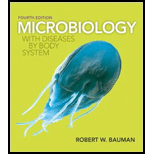
To tell:
Why do patients with methicillin-resistant Staphylococcus aureus (MRSA) as part of their normal microbiota pose a risk to other patients in a hospital?
Introduction:
The upper respiratory region is most prone to infection because of the low temperature. The nose has the cooler region of the respiratory system so that most of the microbes present in the nose. Staphylococcus aureus grows in the nasal cavity which is a gram-positive bacteria and it is an opportunistic pathogen.
Explanation of Solution
Methicillin-resistant Staphylococcus aureus (MRSA) is commonly known as antibiotic resistance. Antibiotics are useful in treating the microbial diseases. Antibiotic resistance means it has some changes in the bacteria that gain resistant to the microbial action.
MRSA is usually acquired from the hospital so it is referred to as hospital-associated or nosocomial infections. Methicillin resistance is resistance to the β-lactam antibiotics by a change in a single genetic element. The β-lactam antibiotics are cephalosporin, penicillin, and carbapenems.
This strain mostly occurs in the UK to the patients who are admitted to the hospital over a month. It does not need any treatment because it does not cause harmful effects. It does not infect a single person, the complete community is affected by this MRSA. MRSA is mostly existed as normal microbes because of the absence of any serious effects, although it infects the other peoples in a hospital.
The MRSA is an antibiotic-resistant bacteria that can infect the health care patients but it exists as a normal microbe is explained.
Want to see more full solutions like this?
Chapter 22 Solutions
Microbiology with Diseases by Body System (4th Edition)
- What is behavioral adaptarrow_forward22. Which of the following mutant proteins is expected to have a dominant negative effect when over- expressed in normal cells? a. mutant PI3-kinase that lacks the SH2 domain but retains the kinase function b. mutant Grb2 protein that cannot bind to RTK c. mutant RTK that lacks the extracellular domain d. mutant PDK that has the PH domain but lost the kinase function e. all of the abovearrow_forwardWhat is the label ?arrow_forward
- Can you described the image? Can you explain the question as well their answer and how to get to an answer to an problem like this?arrow_forwardglg 112 mid unit assignment Identifying melting processesarrow_forwardGive only the mode of inheritance consistent with all three pedigrees and only two reasons that support this, nothing more, (it shouldn't take too long)arrow_forward
- Oarrow_forwardDescribe the principle of homeostasis.arrow_forwardExplain how the hormones of the glands listed below travel around the body to target organs and tissues : Pituitary gland Hypothalamus Thyroid Parathyroid Adrenal Pineal Pancreas(islets of langerhans) Gonads (testes and ovaries) Placentaarrow_forward
 Microbiology for Surgical Technologists (MindTap ...BiologyISBN:9781111306663Author:Margaret Rodriguez, Paul PricePublisher:Cengage Learning
Microbiology for Surgical Technologists (MindTap ...BiologyISBN:9781111306663Author:Margaret Rodriguez, Paul PricePublisher:Cengage Learning Comprehensive Medical Assisting: Administrative a...NursingISBN:9781305964792Author:Wilburta Q. Lindh, Carol D. Tamparo, Barbara M. Dahl, Julie Morris, Cindy CorreaPublisher:Cengage Learning
Comprehensive Medical Assisting: Administrative a...NursingISBN:9781305964792Author:Wilburta Q. Lindh, Carol D. Tamparo, Barbara M. Dahl, Julie Morris, Cindy CorreaPublisher:Cengage Learning- Essentials of Pharmacology for Health ProfessionsNursingISBN:9781305441620Author:WOODROWPublisher:Cengage
 Medical Terminology for Health Professions, Spira...Health & NutritionISBN:9781305634350Author:Ann Ehrlich, Carol L. Schroeder, Laura Ehrlich, Katrina A. SchroederPublisher:Cengage Learning
Medical Terminology for Health Professions, Spira...Health & NutritionISBN:9781305634350Author:Ann Ehrlich, Carol L. Schroeder, Laura Ehrlich, Katrina A. SchroederPublisher:Cengage Learning





